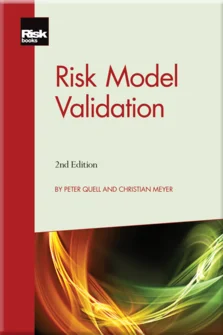Validation Tools
Validation Tools
Introduction
Basics of Quantitative Risk Models
Usage of Statistics in Quantitative Risk Models
How Can a Risk Model Fail?
The Concepts of Model Risk and Validation
Model Risk Frameworks
Validation Tools
Regulation
The Short-term Perspective
A Benchmark Model for Market Risk
The Medium-term Perspective
Modelling and Simulation
Data
Model Results
Conclusion
This chapter will present a number of practical validation tools. Of course, the applicability and usefulness of specific tools is restricted, and a validation tool applied in the wrong place may do more harm than good. Moreover, it should never be claimed that a toolbox is complete – a validation exercise will always require original thinking and a sceptical mind.
Model users are usually less interested in the inner workings of a QRM, but concentrate instead on results, and their credibility and usefulness. It is therefore intuitive to consider tools for validation of model results first, and then proceed to other tools. The following validation tools will be explored in this chapter.
-
The arsenal of statistical methods might be put to use, with backtesting being the most prominent tool in this respect. However, statistical methods require sufficient data quality and are not always applicable.
-
Benchmarking means construction of alternative models and the comparison of results. Such comparison can provide valuable insight. However, construction of a benchmark model can be very complex (that is, as complex as the construction of the original model).
-
As an extension of
Copyright Infopro Digital Limited. All rights reserved.
As outlined in our terms and conditions, https://www.infopro-digital.com/terms-and-conditions/subscriptions/ (point 2.4), printing is limited to a single copy.
If you would like to purchase additional rights please email info@risk.net
Copyright Infopro Digital Limited. All rights reserved.
You may share this content using our article tools. As outlined in our terms and conditions, https://www.infopro-digital.com/terms-and-conditions/subscriptions/ (clause 2.4), an Authorised User may only make one copy of the materials for their own personal use. You must also comply with the restrictions in clause 2.5.
If you would like to purchase additional rights please email info@risk.net











